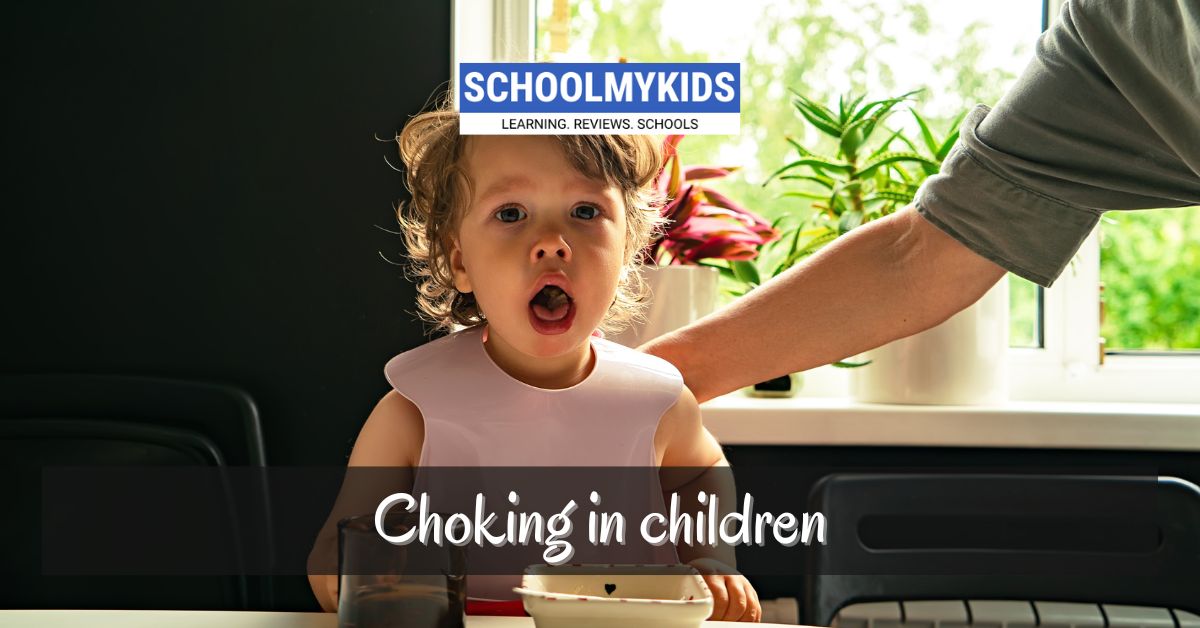What is choking?
Choking means that some particle either a food or toy may be stuck in the airway of the child. Our body has two pipes in the neck, the trachea for the airway and the oesophagus or the food pipe. There is a flap of tissue called the epiglottis which is responsible for protecting the airway when swallowing. While swallowing, it covers the opening of the trachea so that anything does not mistakenly enter the windpipe.
But sometimes, the epiglottis may not completely close the airway and a particle may enter which can lead to choking. If the food goes down the wrong pipe, usually it is incompletely blocking the airway. After a few bouts of coughing the particle is expelled and your child will go back to breathing normally. This can be upsetting for the child.
What is the heimlich maneuver?
The heimlich maneuver is also called the abdominal trust maneuver. It is a kind of first aid technique for a person who is choking. Only a person who is properly trained and certified to do the heimlich maneuver should perform it. If not performed properly, it can lead to more harm than good.
Certain hospitals, institutes and organisations provide certified learning courses for this along with other first aid procedures. If you have a child at home, you should certainly consider learning the maneuver. When a person performs the heimlich on a person who is choking, it forces air up into the trachea. This can dislodge the particles stuck in the trachea and the person will cough it up or expel it out of the mouth. It should be performed with care, especially in young children and babies as they are prone to injury.
Is choking an emergency?
Choking becomes an emergency if the particle lodged in the trachea is completely blocking the airway. If the airway is completely blocked, no air will be able to enter the lungs and it will lead to oxygen deprivation. Prolonged oxygen deprivation to the brain can even lead to brain injury. You should perform the heimlich maneuver immediately if you feel that your child’s airway is completely blocked. Times when choking is an emergency are:
- The child cannot breath
- The child is gasping or wheezing.
- The child cannot talk, make noise or cry.
- The body of the child is turning blue.
- The child has become limp or unconscious.
- The child has swallowed a button battery.
My child is choking. What should I do?
What to be done when a child is choking depends on the situation:
- If your child is choking but also coughing and talking, it may imply that the airways not completely blocked and there is a partial of obstruction. The coughing will most probably expel the particle which is blocking the airway. In this case, do not try to give the heimlich maneuver, pat the back of the child or reach down throat and pluck out the particle. Any of this can dislodge the particle and it can actually completely block the airway. Instead of improving the condition of the child, any interference can be harmful. Wait for the episode to pass.
- Call emergency services if you feel your child has a completely blocked airway. If your child cannot cough, has difficulty breathing, is not talking or a child who was previously talking has gone limp and unconscious; in this case it is most probably a completely blocked airway. If you have been trained to perform the heimlich maneuver, do so. If not, let any other person who has proper training perform it or wait for emergency services. Call emergency services immediately before anything else. You may need to perform CPR (only if trained) in case the child has become unconscious or limp.
When to call emergency services?
If your child had a choking episode but is completely fine now, you do not need emergency services but should consult your doctor. Your child may need emergency services and you should call them immediately if:
- Your child has continuous coughing, drooling, difficulty in breathing.
- Your child has turned blue.
- Your child has become limp or unconscious.
- You suspect that you child may have swallowed a button battery or any object containing lead.
How to prevent choking?
Children are a risk for choking but those under 3 years of age are at an especially higher risk. Small children keep putting random objects in their mouth all the time. They also have a very small airway which can be blocked very easily. To prevent choking in children:
- Avoid foods which are small in size such as peanuts, grapes, hot dogs,nuts, raisin, gummy worms, candy. These are small in size, difficult to chew and can easily get stuck in the airway of the child.
- When giving your child food such as hot dogs and grapes, cut them into very small pieces so that the child can swallow then easily.
- A child when learning to crawl and walk puts random objects in the mouth. Keep the floor and accessible areas of your house clean and do not leave objects lying around.
- Get age appropriate toys for the child to play with.









Be the first one to comment on this story.